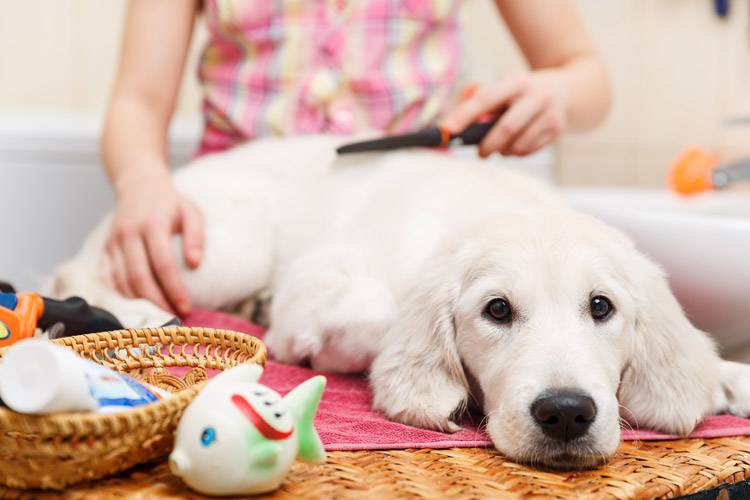Don’t you smell nice!
Your pet’s hygiene is essential to have individual and environmental conditions which do not encourage the apparition and spreading of diseases. Also, it is essential to keeping up its good health. You must include preventive measures in the care routine of your pets to maintain their hygiene, just as you do for your own.
pets
Share

BODY HYGIENE
Healthy skin and fur are essential for your pet. The skin is the barrier which separates the body from external agents which can cause diseases, so it is important that you care for it.
• Grooming: It is important to have a suitable brush to regularly groom cats, dogs and rabbits. Regular brushing, at least once a week, enables to remove most of the dirt which sticks to the fur and any dead hairs. It is recommended to use soft bristle brushes; hard or metallic bristle brushes should only be used by experienced people, as they can cause injuries to the skin if you do not know how to use them correctly.
• Bathing: Once a month, as more often is not recommended, you can bathe your pet with shampoo. It is important to use warm water, to perfectly rinse any soap residue and to carefully dry the skin after the bath.
• Shampoo: You can find shampoo with anti-parasite substances which will help to keep parasites at bay. There are special shampoos for different fur types: by length and type, such as long and smooth fur or short and hard fur; by colour, such as special ones for white fur, etc. It is important to carefully read the instructions to make sure you can use it on your pet, as some substances are tolerated by dogs but not by cats, especially anti-parasites. For small pets, such as guinea pigs or hamsters, you can use a soft toothbrush to brush them. This can also be used on kittens.
• Lotions: You can also find lotions to apply to your pet’s fur to perfume, bring shine, detangle or revitalise the fur. It is important to carefully read the instructions and check if a drying time is needed, in which you will have to make sure your pet doesn’t lick itself or that others don’t lick it.

ANTI-PARASITES, ESSENTIALS
Another group of important products are external parasite treatments. These can be in the form of concentrated pipettes which are applied to one spot on the animal’s back, of sprays or lotions. There are repellent products, with insect repellent substances, which are suited to indoor animals such as cats and have a preventive aim.
There are also insecticides to get rid of parasites. These must only be applied to healthy animals and only after carefully reading the instructions and checking that they are appropriate for your pet. Many anti-parasites cannot be used immediately after a bath and need the skin to dry for at least two days before applying them. As for shampoo, many of them are toxic to cats and rabbits, so you must not use a dog product, even diluted or less frequently, on a rabbit or cat. To avoid unpleasant accidents, you must use products suitable for each pet and always read the instructions.
There are also anti-parasite collars which can be used on dogs and cats, but with some precautions. It is not recommended to use them if there are small children in the house who could put them in their mouths. They must also not be used on outdoor cats as they could get trapped in narrow spaces.
ORAL HYGIENE
Another important aspect is oral hygiene, especially for dogs, and even more for small breeds. Food residue sticks to their teeth and forms a film which hardens with the minerals in their saliva. This makes an ideal breeding ground for some bacteria.
Ideally you should brush their teeth with a specific toothbrush and toothpaste at least three times a week. However, not all dogs tolerate this or their mouths are so small that it is difficult to put a brush in and reach all of their teeth. For these animals you can use dental sticks. Pets see them as rewards thanks to their special flavour. You can use them to reward them for being patient while you brush or bathe them. These sticks are made with products which delay the formation of plaque and tartar and their shape and texture encourage them to chew with all of their teeth.






